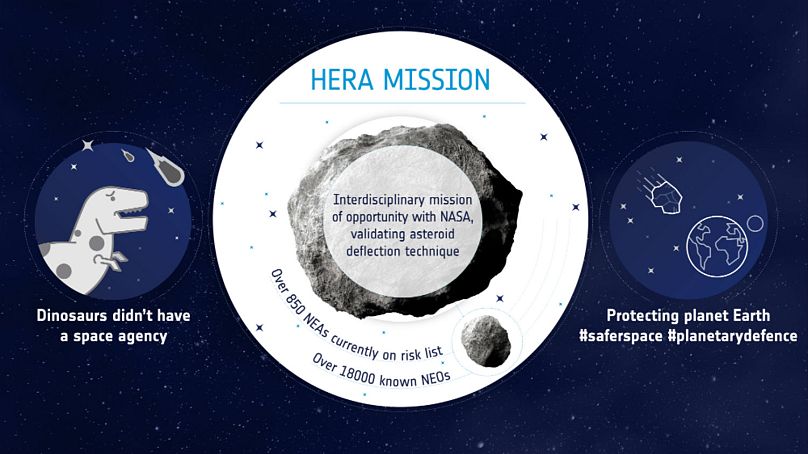NASA and ESA team up for mission to deflect dangerous Earth-bound asteroids
Researchers and spacecraft engineers are set to meet in Rome next week to discuss a common goal of how to deflect dangerous, Earth-bound asteroids.
The ambitious, double-spacecraft mission, known as the Asteroid Impact Deflection Assessment (AIDA), will see experts from the US space agency, NASA, and the European Space Agency (ESA) come together.
“It is vital that Europe plays a leading role in AIDA, an innovative mission originally developed through ESA research back in 2003, said Ian Carnelli from ESA.
"An international effort is the appropriate way forward – planetary defence is in everyone’s interest,” he added.
There are currently 850 "near-Earth asteroids" (NEAs) on ESA's risk list and over 18,000 known "near-Earth objects" (NEOs), according to the agency.
Impacts of small space rocks with Earth are relatively common, it added, and although larger impacts are rarer, they can cause catastrophic damage.
The effect of an asteroid impact on Earth depends on many factors, such as the location of impact, trajectory and the physical properties of the asteroid.
While we have the technology available to mitigate such a threat from an asteroid, it has never been tested in realistic conditions.
Researchers are looking into the viability of diverting an asteroid by crashing a spacecraft into its surface, to see whether the technique is a viable method of planetary defence.
In their sights is one of two double Didymos asteroids between Earth and Mars, which they aim to deflect the orbit of using the impact of one spacecraft.
A second observer craft will survey the crash site and gather data on the effect of the collision.
The NASA and ESA teams will meet from September 11–13 and share the progress of the two AIDA spacecraft and the smaller nano-spacecraft they will carry aboard them.
NASA is contributing the Double Asteroid Impact Test (DART) spacecraft, which is set to collide with its target in September 2022 at a speed of at 6.6 km/s. It is already under construction.
The moment of impact will be recorded by an Italian-made miniature CubeSat called LICIACube.
ESA will launch a Hera probe in October 2024 to study the target asteroid post-impact.
The results of Hera will allow researchers to turn the experiment into a technique that could be repeated were there a real threat.












